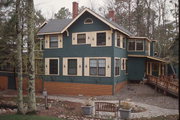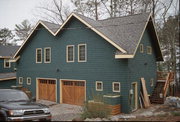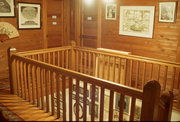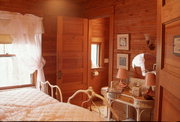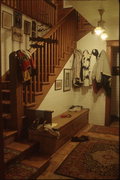| Additional Information: | A 'site file' exists for this property named 'Coole Park Manor'. It contains additional information such as correspondence, newspaper clippings, or historical information. It is a public record and may be viewed in person at the Wisconsin Historical Society, State Historic Preservation Office.
Assoc. Individuals [source] Gregory and Cora Hull, Elizabeth Hull
Historical Background
Coole Park Manor [47-9, 47-10, 47-11] was built by Gregory and Cora Hull in 1905. The main house was designed by architects Wight and Wight of Kansas City.
Their daughter, Elizabeth, undertook the task of designing and building the formal gardens around 1920. Miss Hull planted 450 rose bushes, among others, around a tea house, pergolas, stone paths and walls and a small pool and fountain. A tennis court was constructed at about the same time as the gardens.
The property remained in the Hull family until 1947 when it was purchased by the Vennums, converted to an inn and renamed Chateau Madeline.
Under the Vennums' ownership, the pool was converted to a sand box, the tea house removed to make way for a swingset, and the garden was over-run with ferms and day lilies.
The Vennums sold the property to Beth and Alan Fishlowitz in 1982. They also ran the property as an inn until 1985. The present owners have restored the formal garden to much of its former glory. Using historic photographs, the tea house, pergolas and pool and fountain have been reconstructed, and many of the original planting schemes have been similarly reproduced.
Historical Significance
The property physically embodies the idyllic leisure lifestyle consciously created by the mid-western upperclass at their chosen summer residences.
Description
The wood single-clad main house is a front gabled building with an asphalt roof. The foundation material is obscured by the wall siding. A one story screen and glass porch wraps around two shore-facing elevations. The interior of the house is sumptuous and includes Douglas Fir paneling, and a large fireplace surrounded by terra cotta tiles. The tiles may have been produced by the Grueby Faience Company (also known as the Grueby Pottery Company, and the Grueby Faience and Tile Company) with Addision B. LeBoutilier (1872-1951) as the designer.[A]
The thirteen acre property also includes a gondola built after the Vennums acquired the property in 1947 [46-36]; a power shed now called The Burgandy, and used as guest lodging, also added under Vennum ownership [46-37]; a workshop built ca. 1905 [47-3]; a house/chauffeur's apartment constructed ca. 1905-10 [47-6]; a tennis court constructed c. 1920 [47-8]; a tea house, reconstructed in 1990 [47-9], and the gardens, reconstructed in the late 1980s [47-10]. there is also a small one-room playhouse on the property.
Architectural Significance
The property physically embodies the idyllic leisure lifestyle consciously created by the mid-western upperclass at their chosen summer residences. The main house is an excellent representative example of the attention given to create the northwoods experience. The historic ancillary buildings are indications of the size of the household through World War II, and show that the Hull family maintained a large domestic staff. |
|---|

